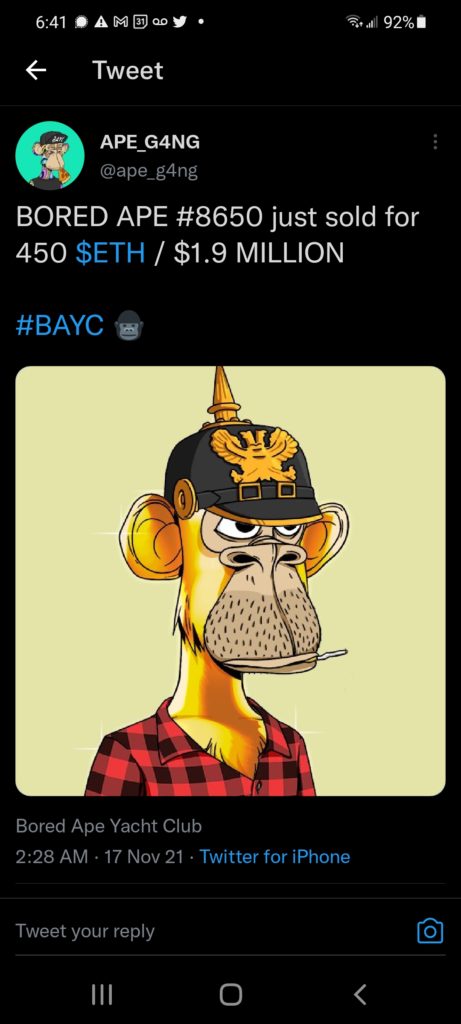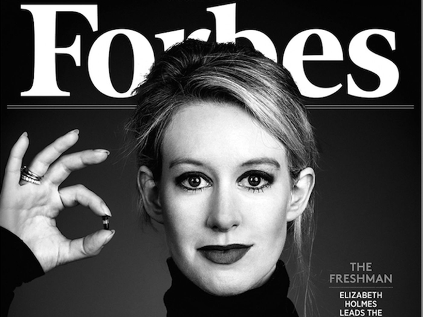What the fungible?! An NFT Exploration.
December 21, 2021 | By Matt Pierce, CFA
The total value of all crypto assets is over $2.2 trillion as of December 2021. Bitcoin and Ethereum make up about three quarters of that. Today’s topic, NFTs, are worth over $27 billion and growing fast! Although crypto markets may be in their adolescent phase, ignoring them much like an overstimulated teenager is probably a mistake. Will Smith has been reminding us that “parents just don’t understand” since 1988. To understand these markets, perhaps we need to view them through a more youthful lens.
“You know parents are the same
No matter time nor place
They don’t understand that us kids
Are going to make some mistakes
So to you, all the kids all across the land
There’s no need to argue
Parents just don’t understand”
While not a parent (to humans) yet, I’m increasingly feeling the gnaw of cultural irrelevance as I spy age 36 on the horizon, or as my colleague, Kevin Smith, put it in a recent email exchange that inspired the tenor of this post,
As I turn 40, I risk fading dangerously out of touch! At some point it is inevitable that I will throw in the towel and say, “This is where tech ends for me. Enjoy your NFTs! As I fumble through the settings on my smart TV.”
NFTs sit in the eye of a maelstrom of culture, technology, and investing that are colliding and combining in unimaginable ways. If you have heard of NFTs, you’ve either been talking to me for the last three months, for which I am sorry, or it’s undoubtedly been framed in a story around the eye popping prices they’re fetching – making conversation on the topic fraught to say the least. Were it not for the seeming absurdities in price, this probably would not be on as many people’s radar. Here is an example of an NFT selling for almost $2M! Your eyes are not deceiving you; the NFT is an image of a bored ape.
Yet these price absurdities make it easy to dismiss NFTs out of hand as purely rampant and foolhardy speculation. While many of the individual transactions will likely prove folly with the passage of time, to mistake the speculation as “the thing” falls short of the mark. Because of the massive cultural dynamic, NFTs have been primarily the venue of the young. As Will Smith of old reminded us, parents (read ‘anyone over the age of 25’), we just don’t understand. All the same, let’s take a crack at it. I’d like to share a few personal anecdotes that led to my “aha” moment and really crystallized the potential for the technology away from the noise of “monkey image sells for the GDP of a small nation.”
If you haven’t heard of NFTs, let’s first establish a working definition. NFTs stand for non-fungible tokens. For those not steeped in economic jargon, an asset is fungible if it is interchangeable with another asset of the same type. My $20 dollar bill is the same as your $20 bill. Your share of stock XYZ is the same as my share of XYZ stock. Assets that are non-fungible cannot be so easily interchanged. My house and your house are both real estate assets, but they’re not fungible. The Mona Lisa and my childhood stick figures, both fine art, but not fungible. An NFT is a means of digitally securing and confirming ownership of a non-fungible asset, real or digital, through the use of a blockchain (typically Ethereum, but there are others). For a refresher on that topic, Kevin had a great primer on Bitcoin and Blockchain in a prior post. Where cryptocurrencies, be it Bitcoin or the coming of central bank digital currencies, have the potential to digitize money and other fungible assets, NFTs can digitize every other asset of both the physical and metaphysical variety. The current applications of this technology may seem odd, with names like “cryptokitties” “bored apes,” and “pudgey penguins”. This is only scratching the surface. Let’s pause here on NFTs and get to the story.
I was recently in the wedding party for a friend of mine, Shounak. At the bachelor party a few months prior, one of the groomsmen, whom I had not met before, asked me how I met the groom. Thus began my circuitous tale, and the eventual point of this personal anecdote. The groom went to high school with another friend of mine, Rory. In the Spring of 2013, Rory and his girlfriend moved to San Francisco where Shounak remained after attending UC Berkeley for his undergraduate studies. I ended up moving to San Francisco with Rory, met Shounak, and in the wake of a series of animated debates on political economy, as one does, a friendship blossomed. If perhaps not the ensuing path, most of you can probably relate to the manner in which we met. Although, who among us can truly say we haven’t been brought closer to our loved ones through debating the finer points of monetary policy from time to time?
How I met Rory takes a turn for the less traditional. It was 2002. Rory and I along with our teammates had been tasked with either securing four hostages from an Italian villa or eliminating their captors. It was a dance we’d each rehearsed across the globe many times before. We geared up and moved out. Everyone was in position. The mission was proceeding according to plan when suddenly… A flash. The unmistakable crack of automatic weapons fire. A prepubescent voice rang out, “AHHHHHH!” Rory was gone. My teammates were gone. A flanking maneuver and deftly thrown flashbang grenade by the terrorist faction had laid waste to them all. Rory was 15. Facing down 8 terrorists alone and consigned to share my team’s fate, I crept my way to the market to make my last stand and perhaps take comfort in the blissful ignorance of a chicken unburdened with the knowledge that it would be the last living thing to see me alive.

As time inevitably dulls our memories, I’ll acknowledge the exact details of our meeting might be slightly different, but something like this grisly tale did unfold! It all took place in a game called Counter-Strike. For the uninitiated, Counter-Strike was one of the preeminent online FPS games that really defined the genre today dominated by games like Call of Duty, Fortnite, etc. Additionally, it helped lay the groundwork for competitive play that has led to the burgeoning eSports industry (estimates value it at around $1B currently).
Okay, the real scene, or IRL (in real life) as the kids say, was our respective bedrooms in Las Vegas and Reno, but it was also the dedicated game server where our chance encounters took place. Individuals would host dedicated servers that others could access to play the game whenever they chose. Eventually people tended to frequent the same servers and form bonds with others in the game. Our conversations eventually moved to other media like AOL Instant Messenger (metallicamatt86 if you were wondering) where topics ranged from not having girlfriends to game strategy. About a year later, Rory came to Las Vegas with his dad, and we made plans to hang out. His dad took a peek into the car to insure it was in fact a 17 year old boy picking up his 16 year old son. I then proceeded to sneak him into the R-Rated 3rd Matrix move. The real world instantiation of our friendship was born.
My mom, a truly endearing luddite, used to jokingly ask how my “cyberfriends” were doing. I can now say I met two of my best friends directly or indirectly through a chance encounter on a Counter-Strike server. I continue to have amazing real-world experiences with people I otherwise would not have met as a direct result of playing a video game some 18-19 years ago. Wow. I’m just as quick as the next person to disparage the time spent by younger millennials and gen-z on social media and video games, but I have to temper that by realizing the enumerative real world experiences, like my own, they will likely have as they mature.
A nice story, but what the fungible does all this have to do with NFTs?
This experience was a proto-metaverse of sorts. Wait, metaverse? Again, where are the NFTs? The metaverse is not just a slight of hand in corporate rebranding. It’s definitely that, too, but it’s also central to the discussion around NFTs, or rather, NFTs are central to the metaverse.
A quick primer again, the metaverse is seen as the evolution of the internet and our virtual lives. This evolution is in part defined by the manner in which we interact with people and content. Where monitors and portable devices are our portals to the digital world, augmented and virtual reality devices will shepherd us into this newest iteration. Moreover, the lines between the real and virtual will become increasingly blurred. A concept this immersive and ethereal is probably best seen to comprehend, and some cringey moments aside, the Facebook Meta conference was a great visual representation of what the metaverse may come to look and feel like.
Like all transformative technologies, the metaverse has untold potential benefits. Taking just one of the small examples from the Meta conference, what does it mean for the future of work where I can be in my home office in Lexington, KY and also be in the digital representation of the AWM office where I could walk down the hall to the conference room for a whiteboarding session with anyone on the team. The last two years have shown the power of these barriers beginning to erode at an even greater pace.
However, there’s a catch. The power and influence of social media platforms like Meta have come under increasing pressure from data security and privacy issues, to exacerbating political division, and even calling into question the entire ad/attention based business model. A new challenger has emerged from the world of crypto and the concept of an open and decentralized metaverse. This concept looks to upend many of the ills associated with social media. A complete reorientation and re-imagination of the internet, dubbed web3, is unfolding at lightning speed. NFTs are integral to this evolution.
In reflecting on my CS playing adolescence, the profound expressions of identity taking place in this game have started to dawn on me, and this is where NFTs really started to click. One area in particular jumps out from the game, skins. Skins are a modification to a game to change the appearance of a game object. For example, changing the clothing your game character is wearing. In Counter-Strike players would often change the appearance of their weapons. For any young whippersnappers happening upon this, BACK IN MY DAY, these were simply free modifications that individuals created that you could download to replace the existing skin. One such skin that really caught my eye was James Bond’s signature Walther PPK. I can still quote this iconic scene from Dr. No verbatim in which Bond is knighted on screen with his metallic partner in debonair adventures. We even developed a style of play called “Bonding.” We’d try to take out the opposing team by stalking around the map with our ersatz PPKs. A herculean task when facing opponents armed to the teeth with AK-47s, high explosive grenades, et al. It didn’t matter; we were James freakin Bond..
Fast-forward to today where game makers have made the sale of skins and in-application purchases the primary driver of revenue for games like Fortnite. The creator of Fortnite, Epic, made $50 Million from the sale of NFL themed skins alone! The game is free. A game maker makes no money for the actual game they made versus the in game commerce opportunities they’ve created.
I totally “boomered” this initially. Again, back in my day, skins were free, but a very important distinction to the skins of yore, only the individual that downloaded it could see it. Only I, and my “Bonding” compatriots actually knew what the fungible we were doing. The skins of today allow for everyone you’re playing with to see them. In the identity quagmire that is adolescence, this is a means of self-expression in these digital world, but again, there’s always a catch. They exist solely in the construct of the game in which they’ve been purchased. An awesome Buffalo Bills NFL skin from Fortnite that someone paid real money for can’t be transferred to another game, say, Roblox. As we careen headlong into the metaverse which promises seamless transitions and interoperability between these worlds and moves beyond just the realm of gaming, this seems like a nonstarter.
At long last, enter NFTs.
In the identity quagmire that is adolescence life, NFTs are the means of self-expression in the digital world. Not only expressing it, but owning it.
This is kind of what we do. Yes, yes, yes Steve Jobs wore that black turtle neck to reduce decision fatigue, but look at this picture, and tell me it’s not dripping with self expression.
Oops, wrong picture…
Purely utilitarian, Steve?
We use pictures, symbols, words, etc. to tell stories about who we are and describe the world around us. Steve told us without telling us, “I innovate. I create. I don’t have time for fashion.” And in so doing, a meme of the tech aesthetic was born.
Culture, style, art, etc. are highly subjective and personal, and let’s face it, more often than not driven by the shifting preferences of the younger generation. As more of our life is subsumed by the digital, it stands to reason our “flexes” and expressions of identity will increasingly manifest themselves in a similar manner.
There’s a layer deeper than just this (im)material consumption. As mentioned prior, this web3/open metaverse concept is a direct critique of the social media era of the internet. Particularly along the vectors of value creation and ownership. Stories of the overnight YouTube or TikTok stars aside. Value has predominantly accrued to the platforms, not the creators. Our data and attention are the true product. The technology underpinning NFTs holds the promise for not just ownership over digital goods and assets but also retaining sovereignty over our data. This could range from determining how and when our data is used to even the potential to reap some of the benefits of its usage.
Grandiose visions aside, the technology is still in its infancy and numerous issues including scaling, accessibility, and usability remain unresolved for more mass adoption. We’re a few steps away from my mom adorning her real or digital walls with monkey portraits she bought on the interwebs with dogecoin. This creates opportunity and peril in ample supply. While the arrow of technological progress may point forward, our expectations, namely in the form of investing and speculation, can wax and wane violently around that trend line. Through that lens alone, much of the speculation taking place will likely prove misguided. However, the cross-sectional vortex that the space has become, which continues to suck in more and more capital and talented, energetic individuals, should not be so easily dismissed. I’ve had a number of moments in which my knee-jerk reaction was to “boomer.” As investors, this attitude is anathema though. I remain skeptical of much of the speculation taking place, but I endeavor to stay open-minded to the opportunities this collision of investing, culture, and technology may unlock.
by Matt Pierce
Return to Blog Page








